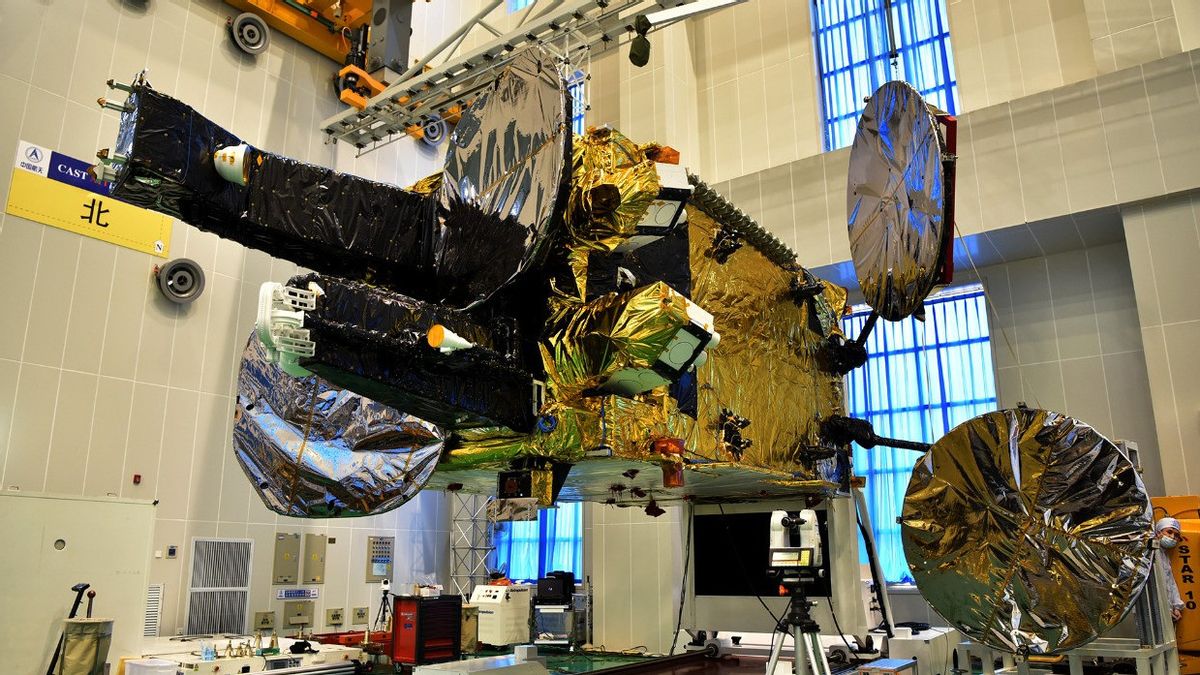JAKARTA - The Nusantara Dua satellite, which was scheduled to take off from the Xichang Satellite Launch Center (XLSC) in Xichang, China, at 7:46 p.m. local time, failed to orbit. Reports cite anomalies as the cause of failure.
The Minister of Communication and Information, Johnny G Plate, said that the Nusantara Dua satellite was originally going to replace Palapa D, which is currently in orbit and serves 23 television and eight radio broadcasters. It is known that the Palapa D satellite already has a usage time limit until this year.
"The Palapa D satellite, which is located in an orbit of 113 degrees East Longitude, is currently serving 23 television and 8 radio broadcasters that will deorbit at the end of July 2020," Johnny explained in an online press conference.
Therefore, the government is collaborating with Indosat Ooredoo, PT Pasifik Satelit Nusantara (PSN) and PT Pintar Nusantara Sejahtera (Pintar) to find ways to keep broadcasting in Indonesia running smoothly, even though the Nusantara Dua satellite fails to orbit.
Kominfo will also convey to the International Telecommunication Union (ITU) so that Indonesia can retain the right to use the orbit after experiencing a failed launch. "For this reason, Indosat Ooredoo is working with its partner PT Pasifik Satelit Nusantara to put a new satellite in orbit 113 degrees East Longitude," said Johnny.
"We have also discussed with the Minister of BUMN, to use all telecommunication satellites to ensure that Indonesian broadcast services can be used properly. We have discussed with Indosat and PSN, various policies will be carried out. To ensure that there is no interruption of satellite services to broadcasting companies," he added. Johnny.
It is known, Indosat Ooredoo, PSN, and Pintar formed PT Palapa Satelit Nusa Sejahtera (PSNS) for the launch and operation of the Nusantara Dua satellite. PSNS also collaborated to purchase a satellite with the satellite manufacturer China Great Wall Industry Corporation (CGWIC) in February 2019.
The Nusantara Dua satellite will be utilized by Indosat Ooredoo as a satellite service provider to support the broadcasting media business in Indonesia. President Director of Pasifik Satelit Nusantara, Adi Rahman Adiwoso, revealed how the failure of the launch could have happened.
The launch process of the Nusantara Dua satellite uses a Long March 3B booster rocket which runs well from stages one and two. But when he entered the stage when suddenly one of the booster rockets did not work.
"When the Nusantara Dua Satellite yesterday launched from China, the third stage had two rockets, one of which did not turn on so it did not have enough speed to enter orbit. The height of the satellite was only 170 KM so the satellite fell into the sea, and could not be saved. The satellite was lost. , it can't be used, ”said Adi in a press conference with Johnny.
However, Adi stated that Nusantara Dua has been covered by insurance that fully provides protection against the risk or failure of the launch and operation of the satellite. Because the Palapa D satellite is still operational, Indosat Ooredoo Chief Business Officer Bayu Hanantasena guarantees that the connection service will continue to run smoothly, even if the Nusantara Dua satellite fails to orbit.
"Palapa D is currently still operating 100 percent. There is no impact at all, but because it is soon entering the end of life, so as a contingency plan, we ensure that the service will continue. We are planning a business continuity plan to find a replacement satellite," Bayu concluded.
After this, Kominfo and the private companies will prepare a proposal for submitting a replacement satellite preparation by 15 June. But before that, Kominfo will hold a trial with ITU in the near future.
The English, Chinese, Japanese, Arabic, and French versions are automatically generated by the AI. So there may still be inaccuracies in translating, please always see Indonesian as our main language. (system supported by DigitalSiber.id)












